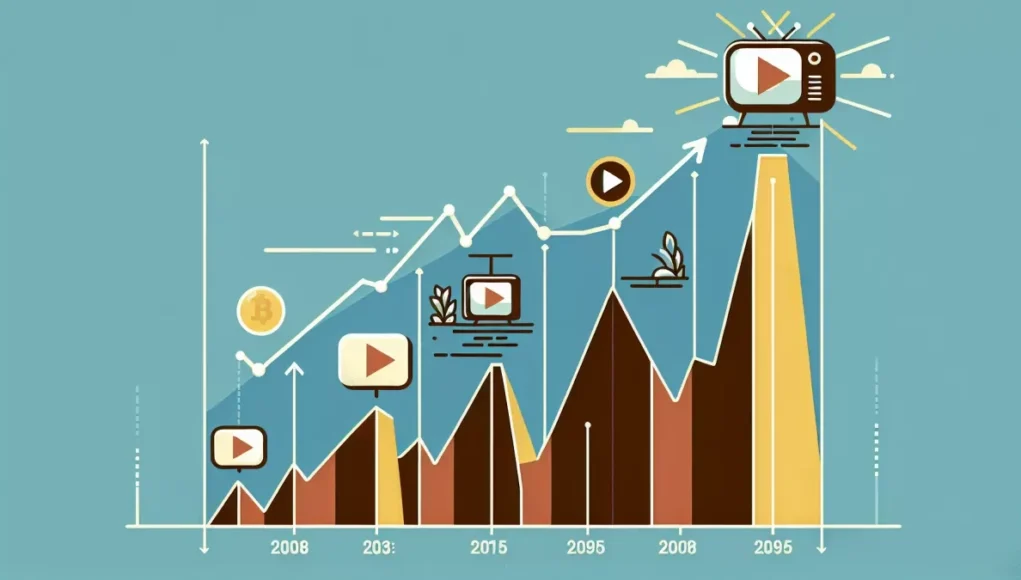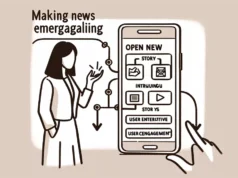In recent years, we have witnessed a seismic shift in news delivery, with a sharp ascendance of short-form and vertical video formats edging out traditional news media. This shift has been driven by the new wave of technology, and particularly, by the digital-first strategy employed by major outlets. As we delve into this remarkable change, it becomes vital to unravel the prominence of these video formats and understand the underlying causes and effects of their phenomenal upsurge.
Remarkably, the unbridled popularity of short-form video lies in its alteration of the reader’s news consumption habits. Traditionally, news stories were long, in-depth pieces written to facilitate top-notch understanding. However, with the acceleration of digital technology and the surge of social media, the content has significantly revolutionized. According to a 2019 Nielsen report, shorter video content under 20 minutes represented 64% of the total time the younger demographics, aged 18-34 and 25-49, spent watching content on smartphones. This data clearly shows that short videos are not only more accessible but also more attractive to the tech-forward audiences.
Furthermore, this rampant development has witnessed the rise of vertical video formats. Traditionally, videos were delivered in a horizontal manner, primarily due to the comfort it offers viewers while watching television or laptop screens. But then came the smartphone revolution. As per data, more than 80% of social media users access these platforms through their smartphones, forcing news outlets to adapt to vertical video formats better suited for mobile consumption. Snapchat Discover and Instagram’s IGTV are some of the major platforms that have championed the vertical format, consequently forcing publishers to rethink their content delivery strategies.
Adding to the allure, video engagement has been boosted by inventive ways of delivering news visually. For instance, the use of strategically placed text and captions grab viewers’ attention, allowing them to digest the content even in sound-off environments. This intriguing development sees news outlets striving to make their content stand out in an increasingly crowded digital landscape.
However, this ascendancy of short-form and vertical video has not just been a simple trend shift; it’s become an existential change for news outlets. Borrowing Jon Slade’s, Chief Commercial Officer at the Financial Times, words, “All significant media outlets should contemplate whether or not they could survive if they had to compete for audience attention…against services designed specifically for mobile use”, it’s evident that the transformation calls for a 360-degree change. Traditional outlets are gravitating towards more mobile-friendly, less detailed, visually stimulating content to stay relevant.
Notwithstanding, this change does not come without challenges. Dealing with short attention spans has multiple implications, primarily revolving around maintaining the quality of news. With the focus shifting towards quick catches, in-depth, thoughtful reporting risks taking a backseat. Moreover, creating compelling, succinct content for a diverse audience requires much more than traditional journalistic skills – it’s now about mastering the art of visual storytelling.
While the ascendancy of short-form and vertical video in news delivery has brought on sweeping changes in the media world, it’s of equal importance to address other aspects such as the spread of disinformation, monetization strategies, copyright issues, and the increasing dependency on platforms like Facebook and Google.
The ongoing evolution of news consumption patterns continues to shape the future of journalism. What remains paramount is the dedication to core journalistic values – truth, accuracy, and fairness, despite the medium or the format in which news is presented.
Sources:
Nielsen Report (2019), The State of Mobile News https://www.nielsen.com/us/en/
Independent Report (2019), A Tale of Two Screens: The Short and Long of Mobile Video, https://www.independent.co.uk/
Talk of Jon Slade, Chief Commercial Officer at the Financial Times, 2019 Deutsche Welle Global Media Forum, https://www.dw.com/en/global-media-forum/gmf-2019/s-100891






